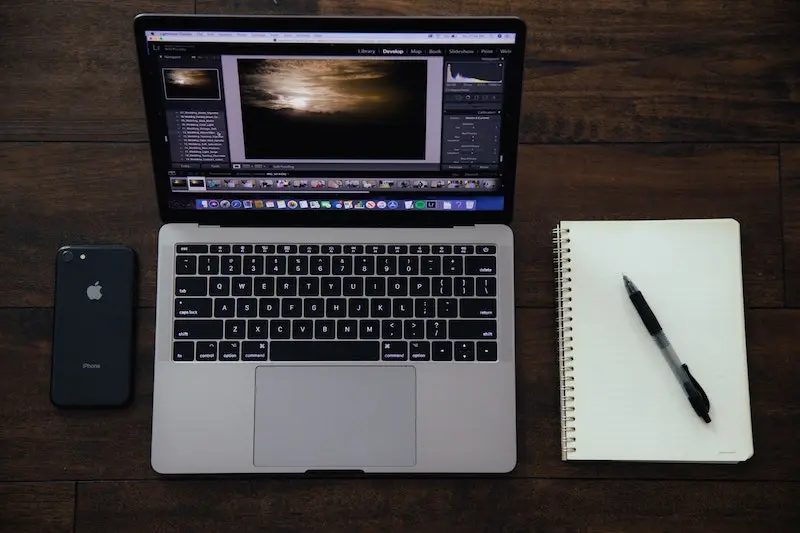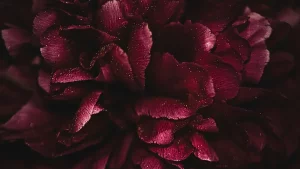In photography, the histogram is the visual representation of the light areas of an image. In the field, checking the histogram curves allows you to verify the exposure of the photo and to correct it if necessary. In this way, it’s possible to find the perfect settings.
Histograms are available on the vast majority of digital cameras. They are also available on many image-editing software programs. Particularly useful, this information is often misunderstood, and therefore misinterpreted. Although the graph may seem complex at first glance, understanding how they work can be very useful in the daily practice of photography, whether while taking pictures or editing photos.
What is a histogram? How can you use it properly? Let’s take a look at the answers.
Table of contents
The histogram in photography: creating a graphic representation of the distribution of light on the image
The histogram of a photograph is a graphical representation of the distribution of light on the image. Specifically, it provides sufficient information to enable the photographer to determine whether or not a photograph has a uniform exposure. In this way, it’s possible to correct all the settings necessary to obtain the desired tones.
The histogram takes the form of a graph:
- the horizontal axis (x-axis) represents a scale of light values from absolute black (the total absence of light) on the left to absolute white (maximum light) on the right. Between these two extremes are dark tones (or shadows), medium tones and light tones (or highlights). The horizontal axis has 256 brightness values (0 for black, 128 for medium gray, 255 for white);
- the vertical axis (y-axis) provides information about the number of pixels present in the image for the different brightness values.

The importance of the histogram in obtaining precise information on the exposure of an image
The histogram is very useful for controlling the exposure of an image after taking photographs and correcting it when necessary. In concrete terms, the graph offers the possibility to anticipate a possible exposure problem and to quickly modify it.
While it’s true that some cameras have overexposure alerts, the histogram remains a much more accurate tool. Indeed, the graph also gives relevant information when an image is underexposed or too saturated.
The histogram, moreover, indicates certain information relating to the values of the pixels of the image (number of pixels of the same value, clipping, distribution of levels, etc.). By checking it, it is therefore possible to know which settings to apply to obtain top-quality photos.
The different types of histograms
There are different types of histograms. The best known are:
- the layered histogram (or color channels), with the representation of the values of the red component, the green component and the blue component of the image;
- the color histogram, which represents the superimposed display of the three layers mentioned above with a white curve (or gray curve, depending on the software);
- the RGB histogram, which displays the average of the combined brightness values of the green, red and blue color layers;
- the luminosity histogram, which is based on our vision system.
The layer histogram and the luminosity histogram are the most interesting for photographers. Thanks to them, it is easier to identify any clipping (when the tone values exceed the graph) in the different layers and to see whether or not there is a loss of information (loss of details, precision, etc.).
The method to follow when reading a histogram
The darkest values are shown on the left of the histogram. The lightest values, on the other hand, are to the right. Specifically, when the histogram expands more in the left part of the graph (at the level of dark tones), it means that part of the image is underexposed. Depending on the desired effect, light should be added.
Conversely, when the histogram expands more in the right part of the graph, it means that part of the image is overexposed. In this case, it is better to reduce the brightness and control the contrasts.
When a large number of pixels have the same value, a peak is created on the graph at the level of these values. Similarly, when certain tones are not present in the image, the histogram displays nothing. When all the tones are grouped together in a single area, this can mean that the image contrast is insufficient and that it is necessary to intensify the highlights in order to deepen the shadows.
In concrete terms, the ideal in terms of exposure is to create a certain harmony by avoiding extremes (unless it’s a technique adopted by the photographer who wishes to obtain a precise effect).
Using the histogram in practice
Using the histogram when taking pictures and during post-production
It is recommended to use the histogram when taking pictures to fine-tune the settings. Indeed, when the photographer is in a very bright area, for example, simply looking at the image on the screen does not allow an accurate assessment of the image quality compared to a histogram.
Therefore, taking a brief look at the graph makes it possible to better understand errors, areas that are too dark, too bright or an overall poor harmony that could result in a lack of detail. In this case, the photographer can make some adjustments, redo a test and check again with the histogram to make sure that this time, everything is in order.
The use of the histogram is also relevant in post-production. It’s important to keep an eye on the histogram while developing and editing the photos so as not to lose information while adjusting the brightness settings, for example. This way, the photographer can keep their bearings and know how to manage their layers without compromising the details of the image.
In this regard, when photographs are taken in uncompressed RAW format, the captured information is retained. In post-production, it is easier to know what to keep or reject based on the histogram.

The importance of taking a step back from the graph
It is important to emphasize that the histogram remains a tool to rely on, not a set of guidelines to be followed to the letter. The photographer’s freedom of choice should also be taken into account.
In this case, it is quite normal to have a histogram in the dark areas (with values on the left of the graph) when it comes to photos taken at night or images that represent sunsets.
Conversely, the histogram of a snowy landscape may show a curve stretching to the right (with values in the whites). There is therefore no ideal histogram, because everything depends on the desired result, the artistic or aesthetic choice of the photographer or the light conditions.
The histogram in photography is a particularly effective tool for obtaining top-quality images. Relying on this graph allows you to correct the visual representation of the tones of the image until you arrive at a result that corresponds to both your expectations and your professional style.










